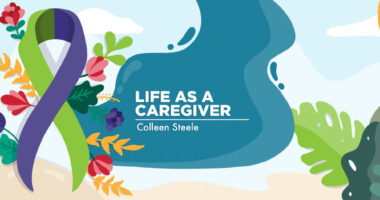Finding community among those with heart illnesses
How I've forged new connections since my heart-lung transplant

Most of my memories with pulmonary hypertension (PH) can be summarized with three words: shortness of breath. I was always trying to catch my breath anywhere I went.
But over time, as predicted, the shortness of breath began to cause other issues. As my pulmonary pressures worsened, my heart began its inevitable decline. The progressive nature of PH couldn’t be stopped, and I spent many years living with the difficult complications of severe heart failure.
The term “pulmonary hypertension” can be a bit misleading. “Pulmonary” refers to the lungs, which centers the mind on thoughts of the respiratory system. This isn’t entirely false. PH is certainly a lung disease, with one of its main symptoms being shortness of breath. In my experience, however, much of life with PH, from testing to treatment, focuses equally on the heart.
Growing up, my family and I would explain PH as a rare heart and lung illness. Despite its name, PH’s impact on each system has been equivalent for me over time. In fact, PH is one of the few illnesses that often requires a heart and lung transplant as an end-stage solution for those experiencing dual pulmonary and cardiac failure. I received a lifesaving heart-lung transplant in 2018.
Forging new connections
Despite all of this, I didn’t feel much connection to the heart community during my time with PH. I know this wasn’t true for some of my PH peers. In fact, I know several individuals who developed rich connections to the heart community as pediatric patients. For whatever reason, this just wasn’t my experience, unfortunately.
My family attended most PH conferences during my 19 years living with the disease. Our PH community was about as full as it could have been, given the small population of affected families in the U.S. I’m so grateful for that community and the role it played in my PH journey. But outside of that small group, I struggled to see myself and my experience represented in a disease community. For some reason, although I knew PH was, in part, a heart illness and I even had a concurrent heart defect, I didn’t view myself as a heart patient.
Since my transplant, fortunately, I’ve become more connected to other heart warriors and families. As I’ve done so, I’ve reconciled the cardiac aspects of my illness both pre- and post-transplant. I can see myself reflected in other heart transplant patients, regardless of the illness that brought them to that point. I’m also able to find so much healing and understanding among heart parents who are bringing up a young and medically complex child, as my parents did with me.
As I make these connections, I can’t help but wish that this broader reach had been available to me as a PH patient many years ago. I know part of it is simply that I now have greater access to others via social media than I did 10 or 15 years ago. I’m able to independently pursue these relationships, rather than relying on the limited support groups and gatherings that were presented to me as a child.
Still, I’m seeing now that so much of my PH experience can be related to those living with different heart illnesses. Knowing that could’ve helped ease the isolation I felt, especially because severe pulmonary illness in children is so rare, and heart-related connections in the PH world are even scarcer. There’s so much love within the abundant community of heart warriors, and I’m glad I’ve found greater access to it over the years.
February is American Heart Month, and it’s been wonderful to see so many heart warriors and families opening up on social media about their experiences, which aren’t too different from my own. I feel privileged to bring awareness to PH amid such a robust and varied community, finally finding an identity for myself and space for my story in a way that was difficult for me all those years ago.
Note: Pulmonary Hypertension News is strictly a news and information website about the disease. It does not provide medical advice, diagnosis, or treatment. This content is not intended to be a substitute for professional medical advice, diagnosis, or treatment. Always seek the advice of your physician or other qualified health provider with any questions you may have regarding a medical condition. Never disregard professional medical advice or delay in seeking it because of something you have read on this website. The opinions expressed in this column are not those of Pulmonary Hypertension News or its parent company, Bionews, and are intended to spark discussion about issues pertaining to pulmonary hypertension.








Leave a comment
Fill in the required fields to post. Your email address will not be published.